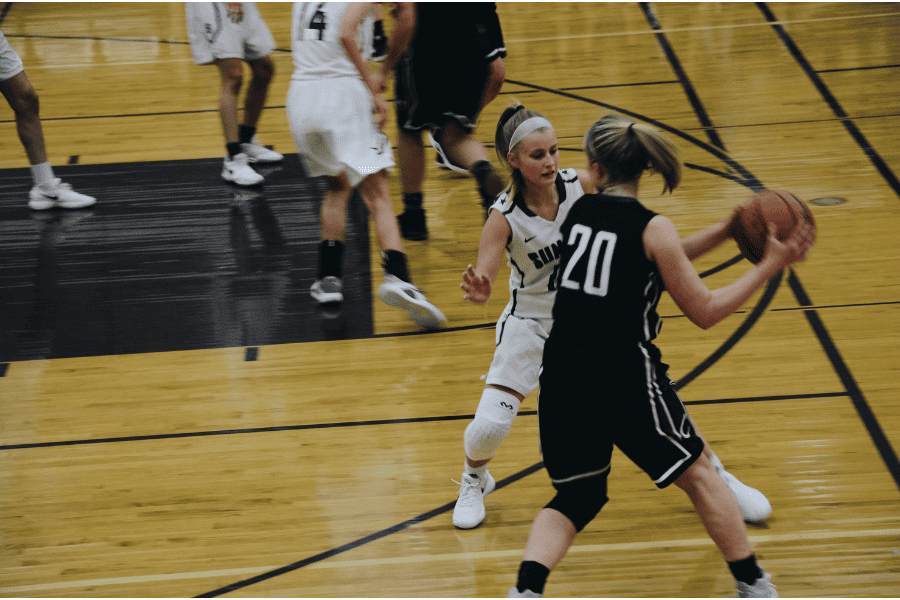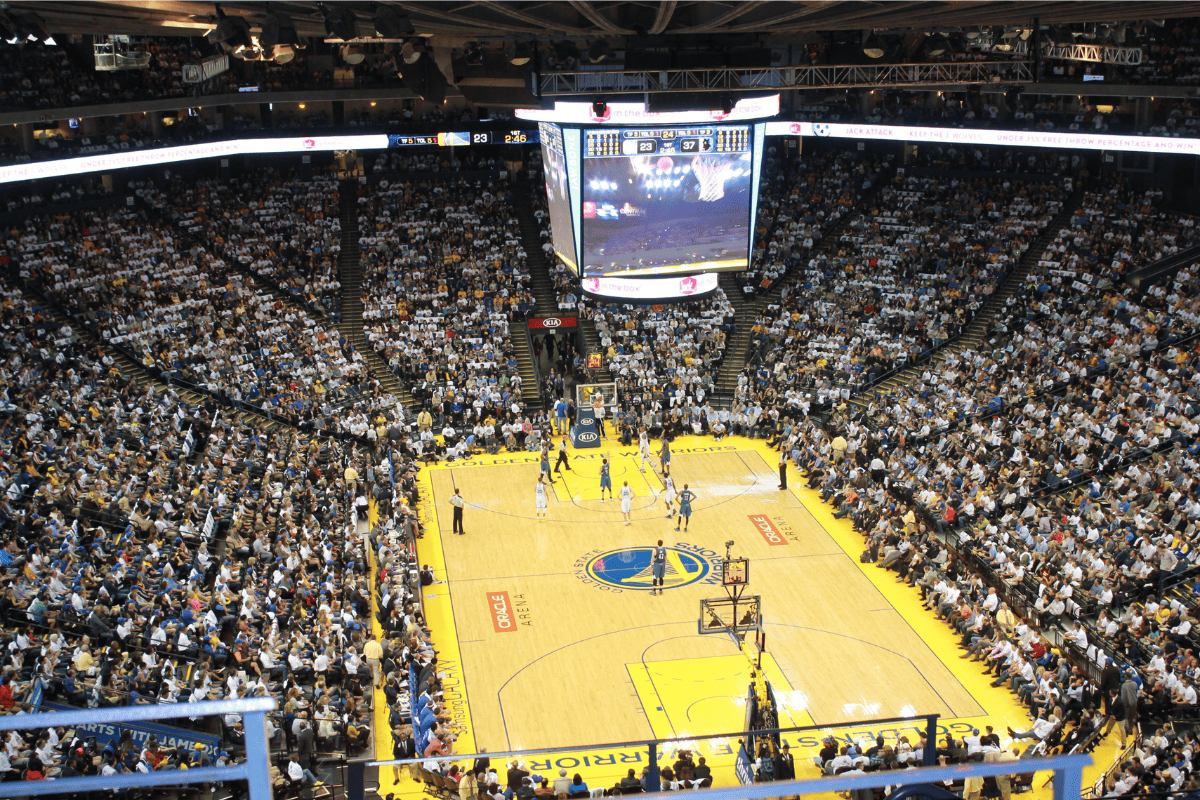What Does a Point Guard Do in Basketball?
The point guard, often referred to as ‘the floor general,’ holds a special place on the basketball court.
They are the primary ball handler, and much like a conductor leads an orchestra, the point guard orchestrates the team’s offense. The game’s rhythm, the execution of plays, and the strategic decisions largely depend on the point guard’s choices and actions.
They’re not just expected to contribute significantly to the team’s offense by setting up plays and scoring, but also to fortify their defense, often guarding the opposing team’s best perimeter player.
In this article, we will delve into the nuances of this crucial position, understanding its historical evolution, defining responsibilities, and the attributes that shape an excellent point guard. We will also highlight some notable point guards whose contributions have defined and redefined the position over time.
The Role of a Point Guard
The point guard, or ‘1’ as it is also known in numerical basketball position language, plays a critical role that balances various responsibilities.
Their tasks are multifaceted, encompassing an array of offensive and defensive duties. They’re the pivot around which the team’s strategies and plans revolve.
Their role often breaks down into four major areas: ball handling and dribbling skills, play initiation and orchestrating the offense, court vision and decision making, and scoring and shooting abilities.
Ball Handling and Dribbling Skills

Point guards are the primary ball handlers on the team. They must possess excellent dribbling skills, allowing them to navigate through defenses, protect the ball from opponents, and maintain possession under pressure.
This capability is essential in bringing the ball up the court, executing offensive schemes, and setting up plays.
Point guards also often lead fast breaks, requiring them to maintain control and speed simultaneously.
Play Initiation and Orchestrating the Offense
As the floor general, the point guard is responsible for initiating plays and orchestrating the team’s offense.
They call out plays and set the pace of the game, often following the coach’s directives. They must know all their teammates’ positions and roles, effectively utilizing each player’s strengths to facilitate the team’s offensive strategies.
This leadership role requires a deep understanding of the game’s tactics, a keen awareness of the team’s dynamics, and strong communication skills.
Court Vision and Decision Making
One of the most important responsibilities of a point guard is to have superior court vision. They need to quickly analyze the game, recognizing open teammates, predicting defensive shifts, and spotting scoring opportunities.
The point guard must make split-second decisions based on their observations, choosing whether to pass, shoot, or drive the ball. Their decisions can often be the difference between a successful offensive possession and a missed opportunity or turnover.
Scoring and Shooting Abilities
Traditionally, the point guard’s primary role was not scoring.
However, in modern basketball, point guards are often significant contributors to the team’s total points. They need to be versatile scorers, proficient at shooting from long range, mid-range, and even finishing at the rim. They should also have the ability to draw fouls and convert free throws.
Despite their scoring duties, they must strike a balance between finding their own shot and setting up their teammates.
In essence, a point guard’s role is all about balance and versatility. They must manage their responsibilities on both ends of the court, know when to take charge and score, and when to distribute the ball to keep the offense flowing.
They set the tone and rhythm of the game, and their performance is often directly proportional to the team’s overall success.
Defensive Responsibilities of a Point Guard
While a point guard’s offensive responsibilities might be the first thing that comes to mind, their role on the defensive end is equally critical for a team’s success.
The defensive role of a point guard extends far beyond merely guarding their direct counterpart. They’re essential in executing defensive strategies, stealing the ball, and disrupting opponent plays.
Guarding the Opponent’s Point Guard

One of the primary defensive duties of a point guard is to guard the opposing team’s point guard. This responsibility requires excellent lateral quickness, agility, and endurance.
They must prevent their counterpart from easily advancing the ball up the court, disrupt their ability to organize plays, and challenge their shooting and scoring attempts.
Additionally, they must know how to navigate through screens set by the opponent to maintain tight coverage.
Stealing and Disrupting Opponent Plays
Another important defensive task of the point guard is to create disruptions and force turnovers. Using their quick hands and excellent anticipation, point guards often aim to steal the ball from opponents, interrupt passing lanes, and pressure the ball handler.
Successful execution of these tasks can lead to fast-break opportunities, swinging the momentum of the game in their team’s favor.
Moreover, point guards also need to be adept at understanding and reading the opposing team’s offensive plays.
This means recognizing patterns, predicting passes, and communicating with their teammates to coordinate effective defensive responses. It also involves calling out switches or helping out on double teams when necessary.
In sum, a point guard’s defensive responsibilities require a high level of physical conditioning, as well as mental acuity and understanding of the game. They must be able to adapt quickly, make smart decisions under pressure, and work seamlessly with their teammates to implement defensive strategies.
Their defensive contributions are vital in maintaining a strong defensive front, preventing easy scores, and transitioning swiftly into offense.
Characteristics of a Good Point Guard
While technical skills are critical in basketball, a successful point guard requires a blend of physical, mental, and interpersonal attributes.
From their leadership and communication skills to physical prowess, mental fortitude, and ability to perform under pressure, these characteristics help distinguish a good point guard from the rest.
Leadership and Communication
Leadership is a fundamental characteristic of a good point guard. They serve as an extension of the coach on the court, often tasked with implementing the game plan and directing their teammates.
This responsibility requires excellent communication skills. They must effectively convey strategies, changes in tactics, and specific plays to the team during the heat of the game.
A point guard’s ability to lead and communicate can be a decisive factor in fostering team chemistry and ensuring everyone is aligned towards a common goal.
Physical Attributes (Quickness, Agility, Endurance)
Physical attributes are critical for a point guard to effectively execute their duties on both ends of the court.
Quickness and agility are essential for dribbling, driving past opponents, and on defense, keeping up with opposing point guards.
Endurance is vital given the significant amount of time they spend on the court. They must maintain a high energy level, continue to make good decisions, and execute plays effectively, even as the game enters its final, often decisive, stages.
Mental Toughness and Basketball IQ
Mental toughness and a high basketball IQ are crucial characteristics of a successful point guard. They need to stay focused and composed under pressure, make strategic decisions quickly, and adapt to changing game situations.
A high basketball IQ involves understanding the rules, strategies, and the strengths and weaknesses of teammates and opponents. This knowledge allows them to exploit opportunities and mitigate risks, contributing significantly to their team’s success.
Consistency and Clutch Performance
Consistency is key for a point guard.
Teams rely on their point guard to deliver stable performances, be it scoring, assisting, or defending. They must also demonstrate clutch performance – the ability to step up during high-stakes moments of the game.
Whether it’s making a crucial shot, defensive stop, or smart play decision, their performance in these critical moments can often dictate the outcome of the game.
While each point guard may bring their unique flair to the position, the combination of leadership, communication, physical attributes, mental toughness, and consistency are shared characteristics of the most successful individuals in this role.
History of the Point Guard Position
The game of basketball, since its inception in 1891 by Dr. James Naismith, has undergone numerous transformations, with the roles and responsibilities of positions evolving over time.
This is particularly true for the point guard position, which has seen significant changes, moving from a primarily distributive role to one that encompasses various offensive and defensive duties.
Origins of the Point Guard Role
In the early days of basketball, the primary task of the point guard, then often referred to as the ‘lead guard’, was to bring the ball up the court and distribute it to teammates. They were the primary ball handlers and were expected to have excellent dribbling and passing skills.
The scoring burden was less emphasized for point guards, and they were evaluated mainly on their playmaking abilities.
Evolution of the Point Guard Role
The point guard’s role began to evolve notably during the 1980s and 1990s. Basketball saw the rise of point guards who not only excelled in facilitating the offense but also made significant contributions as scorers.
Players like Magic Johnson and Isiah Thomas demonstrated how versatile and effective a point guard could be when adding scoring to their repertoire, challenging the traditional notion of the position.
In the late 1990s and 2000s, the point guard role continued to transform. The likes of Allen Iverson and Steve Nash showcased different styles of point guard play.
Iverson, with his exceptional scoring ability, embodied the “scoring point guard” archetype, while Nash, with his extraordinary vision and passing, exemplified the “pure point guard” who prioritizes setting up teammates.
The Point Guard in Modern Basketball
The modern game has blurred the lines of positional basketball, with players now expected to contribute in multiple areas, regardless of their designated position.
Today’s point guards, such as Steph Curry and Damian Lillard, have revolutionized the position with their long-range shooting, ability to score in bunches, while still maintaining their playmaking responsibilities. They’ve shown how a point guard can be both the team’s primary distributor and its leading scorer.
Despite these changes, the core of the point guard role remains the same. They are still the team’s primary ball handlers and decision-makers, tasked with leading the team on and off the court.
As we look towards the future, it is exciting to consider how the position might continue to evolve and adapt to the changing landscape of basketball.
Notable Point Guards and their Contributions
Throughout the history of basketball, certain players have left indelible marks on the point guard position, each bringing a unique style of play and contributing to the evolution of the role.
Let’s delve into the careers and contributions of four such legendary point guards: Magic Johnson, John Stockton, Steve Nash, and Steph Curry.
Magic Johnson
Earvin “Magic” Johnson is widely regarded as one of the greatest point guards of all time. Playing for the Los Angeles Lakers in the 1980s, Magic was known for his exceptional size for the position (6’9″), court vision, and passing skills.
His fast-paced, flashy style of play was instrumental in the “Showtime” Lakers era. Magic demonstrated that a point guard could dominate the game without being the primary scorer and that size and athleticism could redefine the boundaries of the position.
John Stockton
John Stockton, the all-time leader in assists and steals in NBA history, epitomized the traditional point guard role.
Playing for the Utah Jazz, Stockton was renowned for his uncanny ability to distribute the ball and his tough, tenacious defense. His consistency, durability, and understanding of the game underscored the importance of a point guard’s role as a playmaker and a leader.
Steve Nash
A two-time MVP, Steve Nash is often credited for transforming the point guard position and influencing the style of modern basketball.
Nash’s extraordinary passing ability, court vision, and shooting accuracy were at the center of the “seven seconds or less” Phoenix Suns of the mid-2000s. Nash showed that point guards could simultaneously be effective scorers and distributors, leading to a more offense-focused style of play.
Steph Curry
In the modern era, few players have influenced the game as profoundly as Steph Curry. The Golden State Warriors point guard has redefined the position with his incredible shooting range and accuracy, often from well beyond the three-point line.
His ability to score in bunches while still distributing the ball effectively has transformed offensive strategies across the league. Curry’s style has highlighted the importance of shooting skills for point guards and has contributed to the increasing pace and space style of play seen today.
In essence, each of these players has brought their unique talents and style to the point guard position, significantly impacting how the role is understood and played. Their contributions underline the versatility of the position and its potential to shape the game’s dynamics.
Final Thoughts
The game of basketball thrives on strategy, coordination, and skillful execution, where each position on the court plays a crucial role.
However, the point guard holds a distinct place due to its unique blend of responsibilities and the influence it wields over the game’s flow and outcome.
As the primary ball handler and the team’s on-court leader, the point guard sets the pace and dictates the rhythm of the game. Their role spans a range of tasks, from executing offensive plays and making key decisions, to contributing to scoring, and implementing defensive strategies.
This multifaceted nature of their duties requires them to possess a variety of skills, both physical and mental, including excellent dribbling, shooting, communication, leadership, and a high basketball IQ.
The evolution of the point guard position, from a primarily distributive role to an all-encompassing one, underscores its complexity and importance. This progression has been driven by legendary players who have redefined the boundaries of the position, each bringing a unique style and set of skills that have influenced the game’s dynamics.
In essence, the success of a basketball team is often linked closely to the performance of its point guard. Their ability to effectively balance their diverse responsibilities and adapt to changing game situations can greatly influence the team’s overall success.
Despite the changing nature of basketball, the pivotal role of the point guard remains constant – they are, undeniably, the heartbeat of the team.
If you found this guide on the point guard position helpful, you may also want to check out our guide on the center position.

